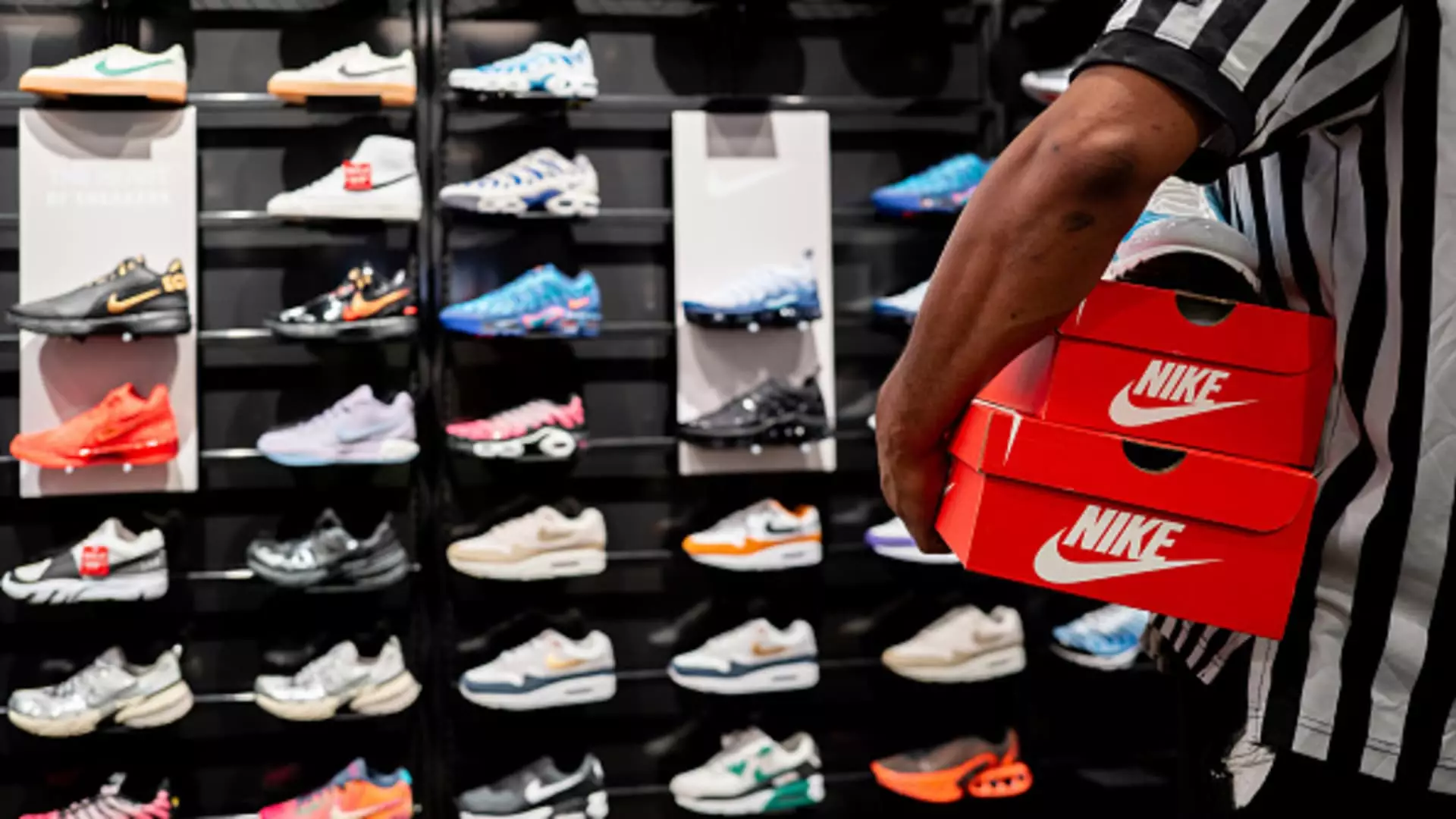Nike’s Challenges Ahead: A Critical Examination of Its Upcoming Earnings Report

As Nike gears up to release its fiscal first-quarter earnings report, the prevailing sentiment among investors suggests a cautious outlook. The anticipation is underpinned not only by the company’s recent struggles but also by a leadership transition that is expected to reshape its future strategies. In this article, we will analyze Nike’s current predicament, delve into the implications of leadership changes, and consider the broader market conditions impacting the athletic giant.
The consensus estimates for the upcoming earnings report predict earnings per share (EPS) of 52 cents, coupled with revenues approximating $11.65 billion. This forecast signifies a troubling trend, with expectations of a 10% year-over-year decline in sales and a dramatic nearly 45% plunge in profits. Typically a bellwether for sportswear innovation and market trends, these projected figures reflect the growing unease regarding Nike’s ability to maintain its status as the foremost player in the sneaker industry, especially amidst stiffening competition.
The economic landscape faced by Nike is distinctly unfavorable. Over the past several quarters, the company has grappled with criticisms of stagnant innovation and a persistent underperformance relative to competitors. While Nike shifted focus to bolster its direct-to-consumer approach, the over-reliance on its own retail channels appears to have come at the expense of wholesale partnerships that historically contributed significantly to its sales volume.
The recent announcement revealing that CEO John Donahoe will step down introduces an intriguing yet concerning dynamic. Donahoe’s tenure has not been without achievements; under his leadership, Nike saw an impressive annual sales growth of over 31%. However, this growth was, in a large part, driven by legacy franchises like Air Force 1 and Dunks—styles that had already carved out their existence in the market, rather than pioneering new designs that traditionally bolstered Nike’s status.
The appointment of Elliott Hill, a long-serving Nike veteran, indicates a return to familiarity. Hill, who has seen the company’s evolution firsthand for over 32 years, brings a wealth of knowledge. However, he is now tasked with reversing the narrative of stagnation and reigniting the company’s innovation engine. With recent layoffs and a reported cultural breakdown, his leadership will also need to address internal morale, making the job both challenging and critical to regain stakeholder trust.
Another layer complicating Nike’s challenges is the current economic climate, particularly concerning consumer spending on discretionary goods. Analyses suggest that the U.S. footwear market is projected to grow by a mere 2% in 2024 compared to 2023, reflecting a broader pattern of consumer caution. Furthermore, athletic footwear is estimated to see a modest increase of about 5.6%, which—while better—is hardly indicative of a booming market.
Adding to its woes is Nike’s performance in China, which serves as a crucial market. The company already warned of a “softer outlook” for the region earlier in the year, which naturally raises red flags for investors. While recent stimulus measures from China’s central bank may offer a glimmer of hope for economic recovery, their impact has yet to manifest fully, with Nike’s fiscal first quarter ending prior to these measures. It remains to be seen how swift and pronounced the recovery will be.
As Nike prepares to unveil its quarterly results and transition to new leadership, all eyes will be on how the company responds to these multifaceted challenges. The expectations from analysts signal a need for immediate strategic realignment, particularly in innovating product offerings and reviving relationships with wholesale partners. The need to reestablish its reputation as an innovator is paramount.
Investors will undoubtedly scrutinize the upcoming report for any insights or direction regarding Hill’s strategy for revitalization. Given the current market realities, Nike stands at a crossroads; its ability to navigate this tumultuous landscape holds significant ramifications, not just for its stock price but for its long-term positioning within the athletic apparel market. As it grapples with these pressing challenges, Nike must reaffirm its commitment to innovation and customer engagement to reclaim its status as an industry leader.





